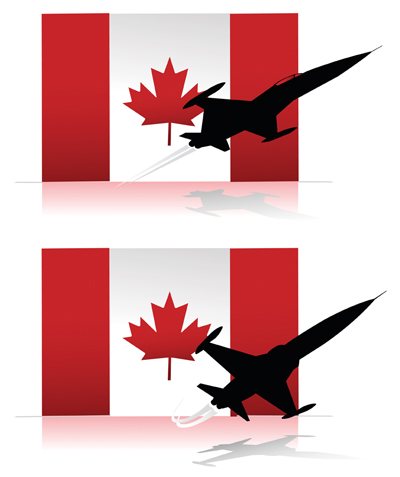
News
On final: National partnerships adding value
The existence and functions of Sector Councils are not well known to the Canadian public. They were created and are largely funded by the federal government to pursue human-resource (HR) development in designated sectors of the Canadian economy.
February 8, 2010 By Robert Donald
The existence and functions of Sector Councils are not well known to the Canadian public. They were created and are largely funded by the federal government to pursue human-resource (HR) development in designated sectors of the Canadian economy. The Canadian Aviation Maintenance Council (CAMC) is the council for the aviation and aerospace sector. Sector councils are national partnership organizations that bring together business, labour, educational institutions and, in CAMC’s case, also the military.
 |
Initially, CAMC focused its efforts on skills development and training: working with industry to develop national curricula (to ensure colleges are teaching what industry needs); working with colleges and training organizations to accredit programs using a CAMC curriculum; developing occupational standards in aviation and aerospace trades; and certifying individuals in those trades. To date, CAMC has 43 programs across Canada running at 23 training organizations, has developed 26 occupational standards, and has certified thousands of individuals, with thousands more in the process of becoming certified.
More recently, CAMC has focused on challenges facing the industry. Readers are no doubt well aware of the demographic challenges facing developed economies as a result of aging populations (e.g., declining birth rates and higher rates of workers exiting the work force than entering it). The Economist magazine published a 16-page special report on this issue last summer. Canada is no exception. In addition to the general challenge posed by a declining population, the aviation and aerospace industry faces its own challenges. The International Civil Aviation Organization (ICAO) has created a special working group – The Next Generation of Aviation Professionals (NGAP)– to address this issue internationally. CAMC is actively involved in this work and is chairing one of the ICAO NGAP sub-committees.
CAMC is not a lobby group or an industry association. It's a not-for-profit national organization that focuses on helping industry with HR issues. As noted above, most CAMC funding is provided by the federal government for approved HR projects. Each year CAMC consults with its members and other stakeholders about industry needs. In turn, CAMC prepares project proposals to submit to Human Resources and Skills Development Canada (HRSDC) for funding. The most recent session was on Nov. 30, when CAMC submitted five proposals for 2010. CAMC also has ongoing multi-year projects, details of which may be found online at www.camc.ca/en/62.
One project in particular is worth highlighting at this time: CAMC’s “SMS project.”
To help the aviation and aerospace industry comply with regulatory requirements and provide HR solutions, CAMC, in partnership with national and provincial associations, has developed a quality management implementation program to complement its new Occupational Standards for Quality Assurance Manager and Quality Systems Auditor. The program consists of two days of training, followed by a distance-learning component and a follow-up certification session. It is this certification, to a recognized national standard, that appeals most to companies who wish to establish a safety management or quality management system.
A first workshop was conducted in December and others are being scheduled throughout 2010. At press time, planned workshops included January 12 and 13 in Winnipeg (in partnership with the Manitoba Aviation Council), and Jan. 14 and 15 in Saskatoon (in partnership with the Saskatchewan Aviation Council).
As its name suggests, the Canadian Aviation Maintenance Council’s original mission was HR development for a segment of the aviation industry, i.e. maintenance. Several years ago CAMC expanded its HR activities to include aerospace. CAMC has done some good work in this area, including new occupational standards for the aerospace industry and a sector study, but more still needs to be done. The current study of commercial pilots, being conducted in partnership with the Air Transport Association of Canada (ATAC) and the Helicopter Association of Canada (HAC), as well as the study of Canadian airports being conducted in partnership with the Canadian Airport Council (CAC), are examples of this new initiative.
CAMC’s over-arching objective is to ensure that the funding provided by government provides value to the industry. We are constantly striving to achieve this objective, and will be conducting information sessions and workshops across the country throughout 2010 to obtain input from all stakeholders. I sincerely hope that all readers will contribute to the discussions.
Robert Donald is the executive director of the CAMC.